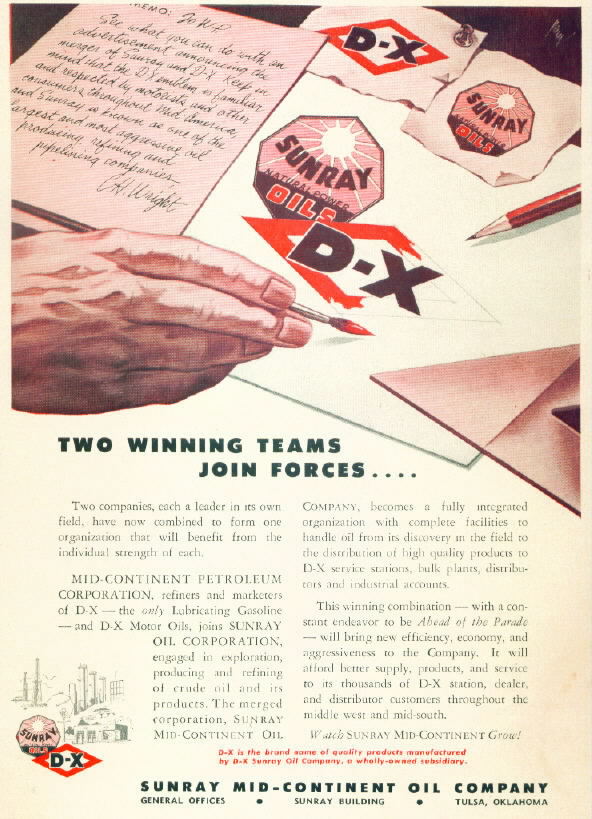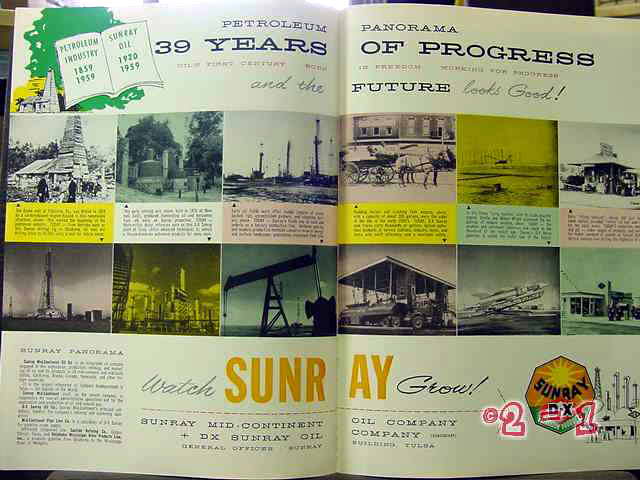The company’s stations began selling gasoline at stations under the Diamond name at some point in the early to mid- 1920s. The stations sold motor oil, kerosene, Diamond gasoline, and an anti-knock version known as Nevr-Nox. This antiknock compound must have been something other than Ethyl at the beginning, because it was touted as being “non-poisonous” on some versions of signs and globes from the 1920s through 1933.
In 1933, “D-X” gasoline was introduced. It is theorized that this name was in reference to “Diamond – X,” suggesting an “X-factor” or unknown substance in the gasoline that made it superior to others. The D-X name became more prominent, being applied to more than just gasoline. Eventually, by the end of WWII, stations were rebranded from “Diamond” to simply “D-X.”
In 1955, significant changes took place in the company. Because Mid-Continent was mainly a holding and marketing operation, it proved beneficial for them to merge with a heavily production-oriented company. In this case, that company was Sunray Oil.

This merger resulted in two new companies. The Sunray Mid-Continent Oil Co. was the production-oriented entity, and the D-X Sunray Oil Co. was geared primarily towards marketing and distribution. Stations continued to operate under the D-X name (changed to DX in or about 1957). Sunray stations added the D-X logo to the bottom of their logos at the time of the merger, but by 1962, all were rebranded to DX.
This Sunray advertisement is from 1959:

Also in 1962, a name change took place for DX Sunray. The positions of the names were reversed, yielding the Sunray DX Oil Company.
1968 brought about the end of Sunray DX, as a merger with the Sun Oil Company (Sunoco) resulted in its dissolution. The DX stations located in Sunoco marketing areas were rebranded, but the stations outside of these areas remained DX until after 1980. It was in this year that Sun began to rebrand all of the DX stations gradually, the last of which disappeared in the mid-1990s.
Stay tuned for more information and photos. Up next is the company timeline, followed by station pictures and more!